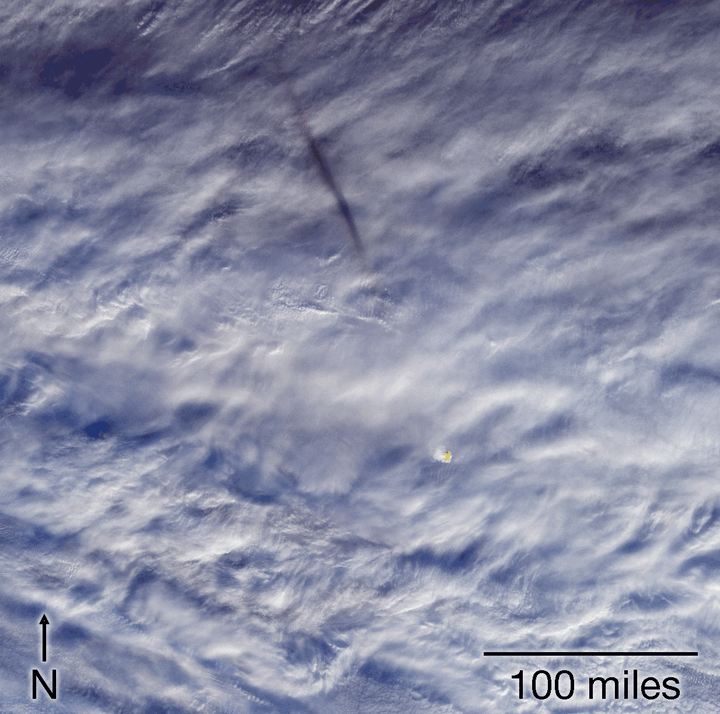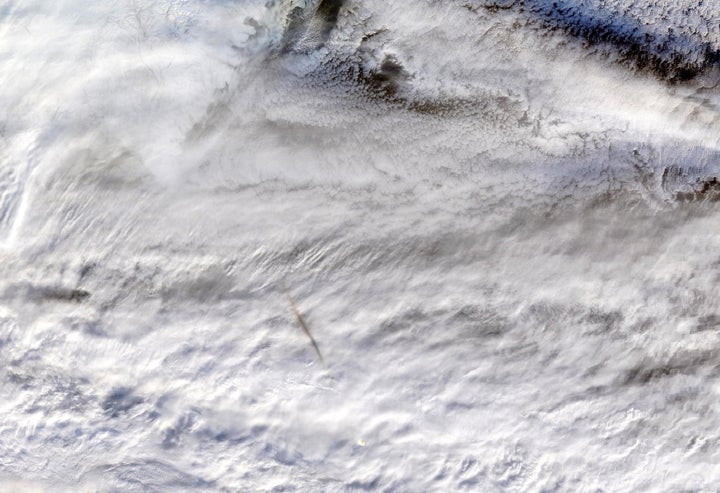NASA has released images of a huge meteor that exploded over Earth last year with more than 10 times the energy of the atomic bomb dropped on Hiroshima during World War II.
The “fireball,” NASA’s term for an exceptionally bright meteor visible over a wide area, exploded about 16 miles above the Bering Sea on Dec. 18. Although fireballs are quite common, this was the most powerful meteor scientists have tracked since 2013.
On Friday, NASA shared images of the fireball captured from Terra, a satellite the size of a small school bus that is circling Earth on a north-to-south orbit every 99 minutes. The images were snapped a few minutes after the explosion, according to NASA.

In one image sequence, a bright orange cloud left by the meteor is located on the lower right. The long, dark streak at the center of the image is actually a shadow of the meteor’s trail cast on top of clouds. The shadow is stretched out by the sun’s low angle.
A second image, captured by a different instrument aboard Terra, is a true-color photo of the remnants of the meteor’s passage.

Meteors, commonly known as “shooting stars,” are the visible paths of asteroid or comet fragments that enter the Earth’s atmosphere. Atmospheric friction causes the object to slow down, heat up, and eventually break apart. Fragments from the exploding space rock, called meteorites, are sometimes found on the ground.
Due to its altitude and remote location above the Bering Sea, NASA said the December fireball wasn’t a threat to humans.
In 2013, a large meteor exploded above the Russian city of Chelyabinsk, damaging buildings and injuring over 1,000 people.
https://www.huffpost.com/entry/fireball-nasa-terra_n_5c98e057e4b01ebeef123d26
2019-03-25 16:44:00Z
52780247356464
Bagikan Berita Ini














0 Response to "NASA Captured Images Of A Giant Meteor Explosion Over Earth - HuffPost"
Post a Comment